When strumming the guitar, we’ll typically repeat a single short pattern of strums over and over again. This is called a strumming pattern.
Strumming patterns tell us which direction to strum (up or down), and also tell us exactly when each strum should occur.
Whether a strumming pattern is simple or complicated, it’s repeated over and over again as we move through a song - even when we’re changing chords or adjusting the volume or our playing.
The exact strumming pattern we use will often change from song to song, but there are some common patterns that are used more often than others.
Here’s a few examples of strumming patterns you might see:
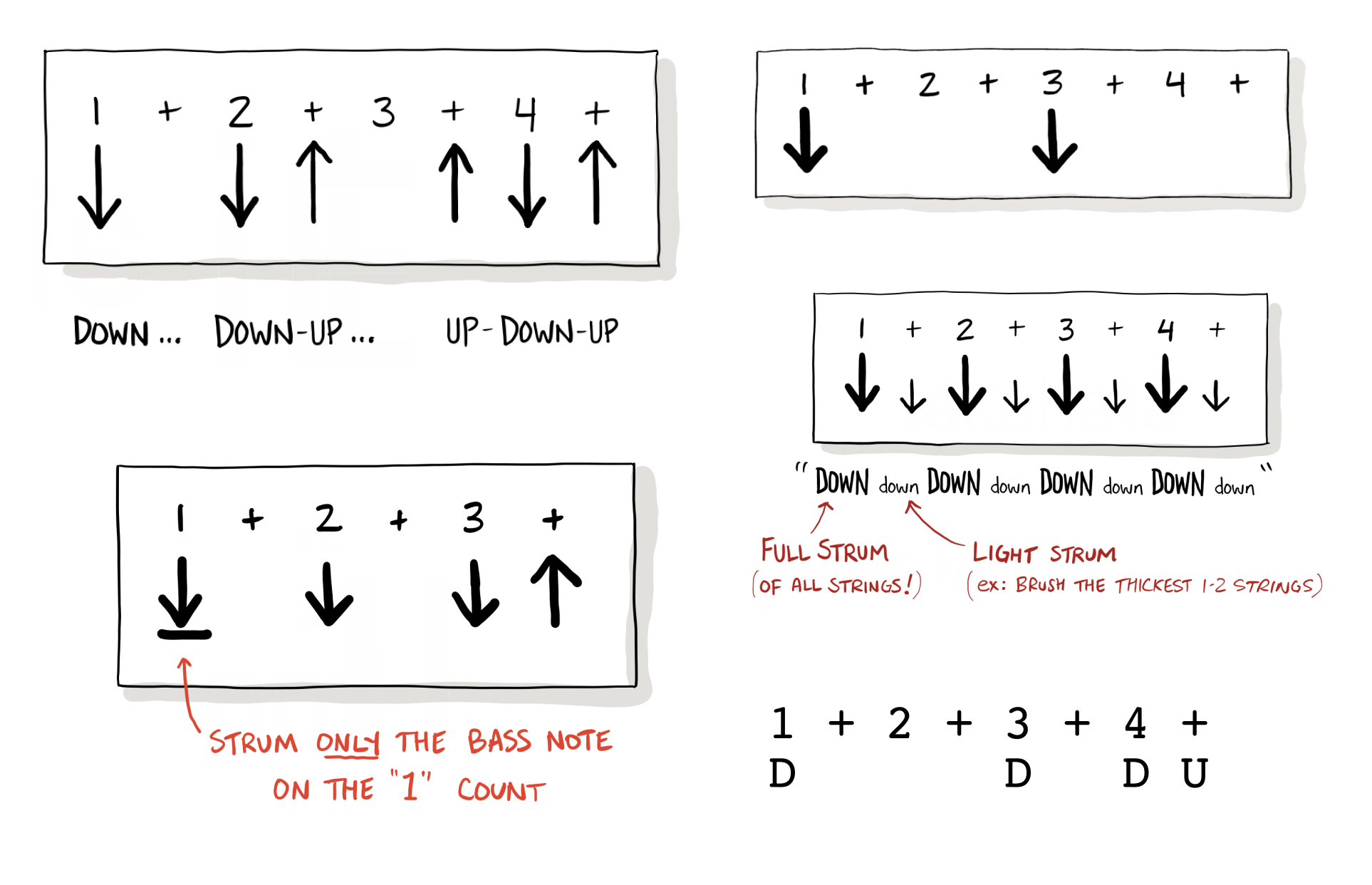
Strumming patterns include some combination of down-strums, where you extend your arm and move the pick toward the ground…
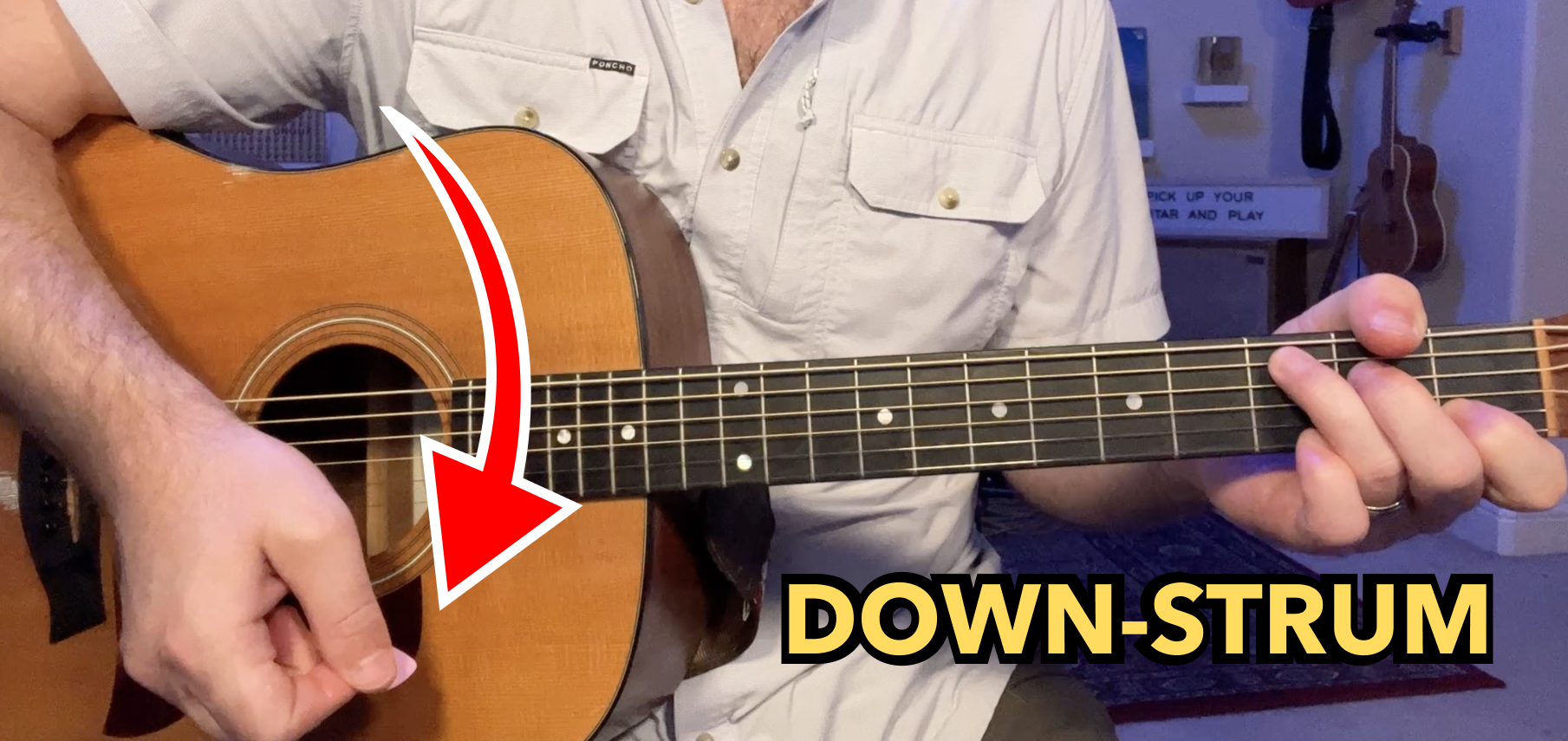
And up-strums, where you’re moving the pick toward our face. When up-strumming, it’s often okay if you only play the thinnest few strings of whatever chord you’re playing.
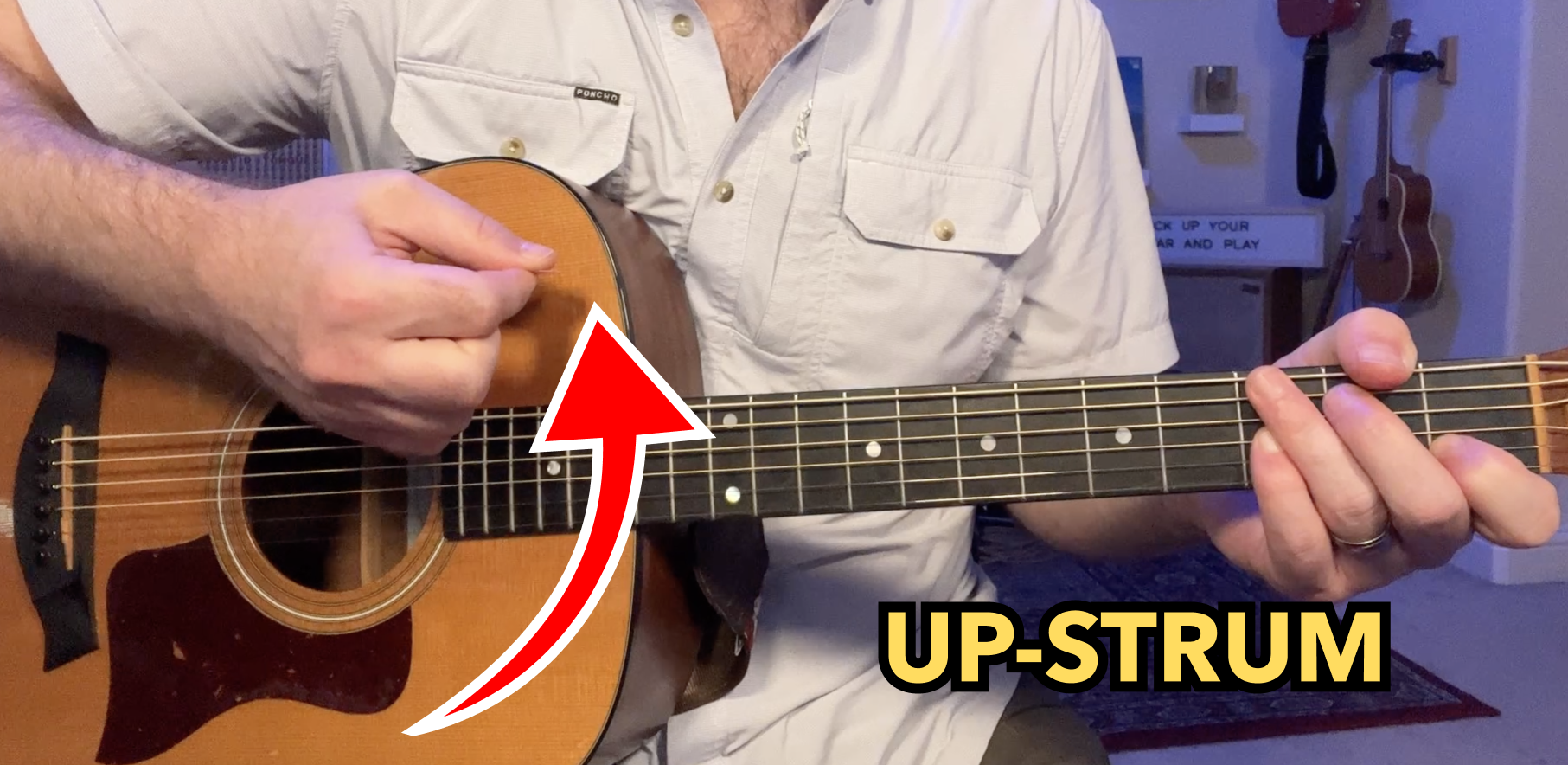
Strumming directions can be written with arrows, letters (“D” and “U”), or full words. Here’s a single pattern written out in three different ways:
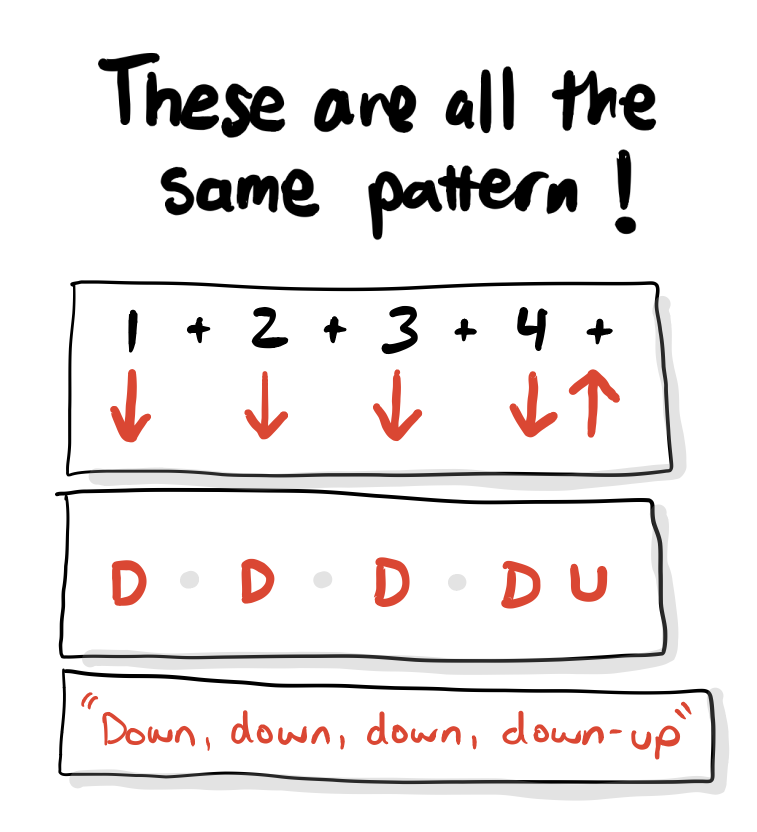
In addition to these two strumming directions (up or down), rhythm plays an important factor too. This is conveyed via numbers (counting) written as part of strum patterns. This makes it crystal clear exactly when to strum, and when not to strum.

Numbers, while not always included in strumming patterns, convey the rhythm that underlies the pattern. That is, the steady beat (tempo) that is ongoing while we move through the strumming pattern.
A vast majority of popular music (in the West) is divided into chunks of four beats. Each of these chunks is called a measure, or sometimes a bar.
When we see “1 2 3 4” written out horizontally, we’re meant to count these numbers in order, over and over – keeping a steady beat. These four beats are called quarter notes.

Sometimes, we’ll want to play/strum/sing between the quarter notes – which we’ll mark up with a “+” symbol. These are represent eighth notes, which are spoken aloud with the word “and”.

Sometimes, measures only have 3 beats. And other times, measures have 6 beats.
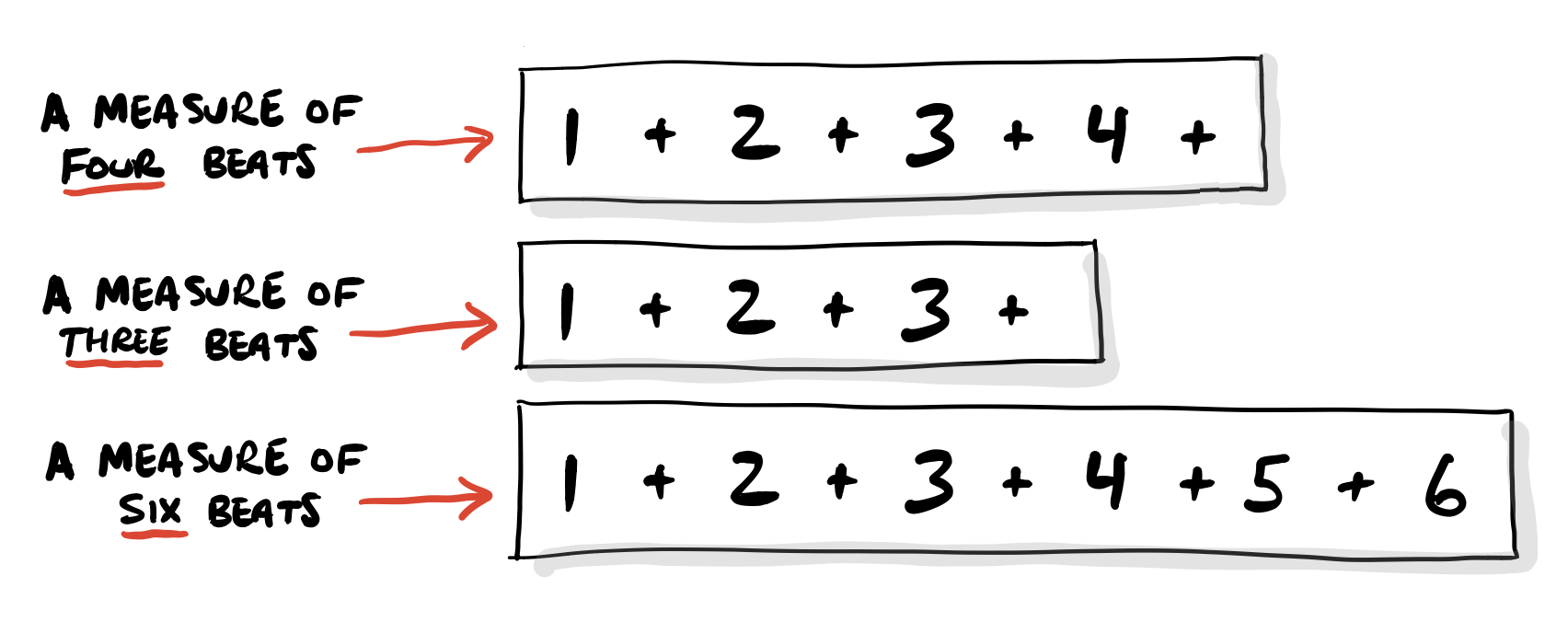
No matter how many beats are in a measure, we can write strumming directions below the numbers. This tells us exactly when to strum! Again, make sure you count the beats (out loud or in your head) at a steady tempo.
Accented strums are louder than all other strums. These are often used to place emphasis on the “strong” beat in a measure, which helps give things a sense of pulse and drive. In music notation, these are written up with a greater than symbol (>) written below the strum:
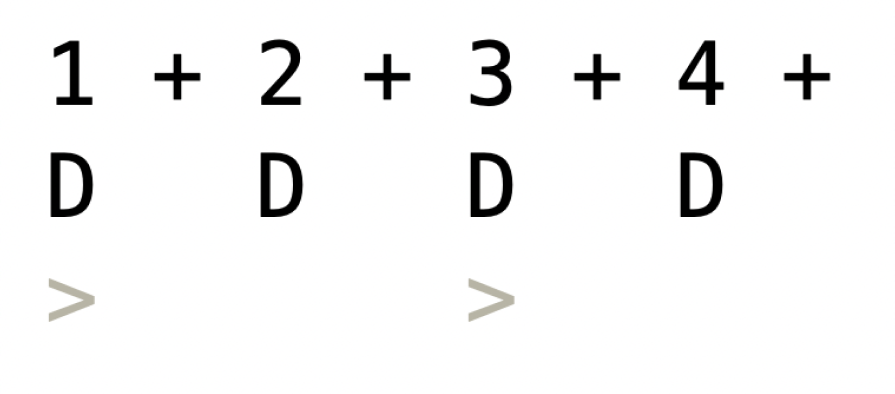
You might also see my strumming patterns convey this with arrows that are bigger and bolder than their counterparts. Likewise, I might write up a pattern with spoken words - and capitalize the accented strums:
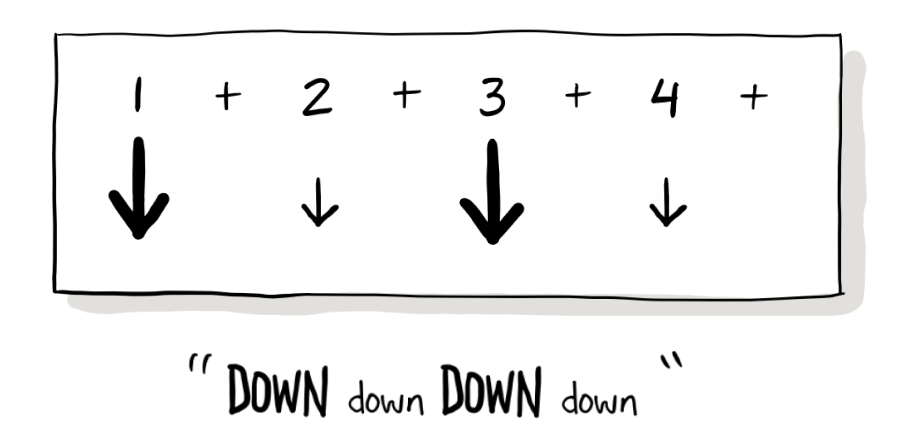
Bass-Note strums mean we should only pluck the thickest string of whatever chord we’re playing. These are often drawn with a downward arrow that has a horizontal line beneath it.
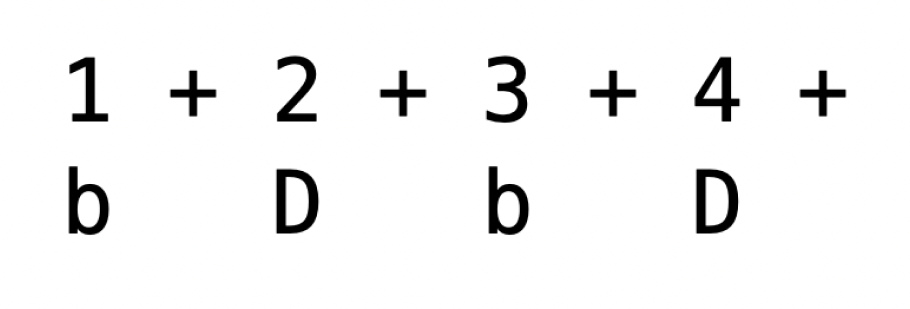
Alternatively, you might see the letter “b” used in typed strumming patterns - which mean the same thing:
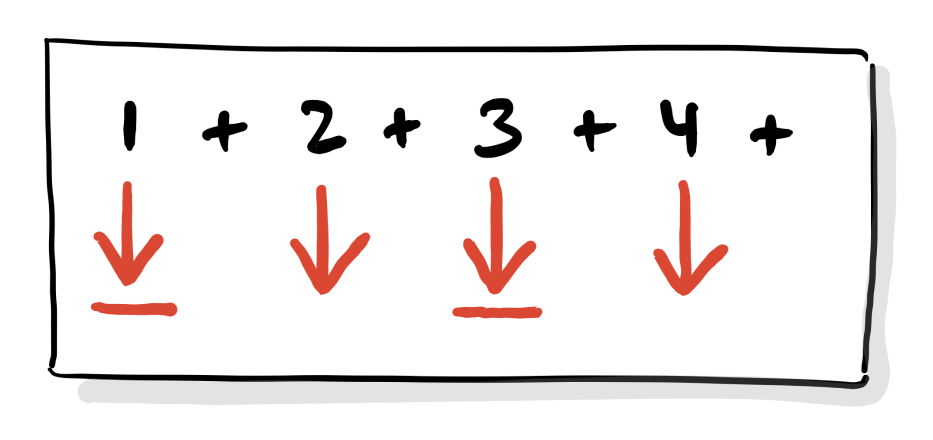
Percussive strums are when we apply a percussive hit or slap or chop on the guitar strings, as part of a down-strum motion. These can add a sense of rhythmic flair to our playing, as if we are imitating a snare drum with our guitar. These are commonly written with an “X” symbol:
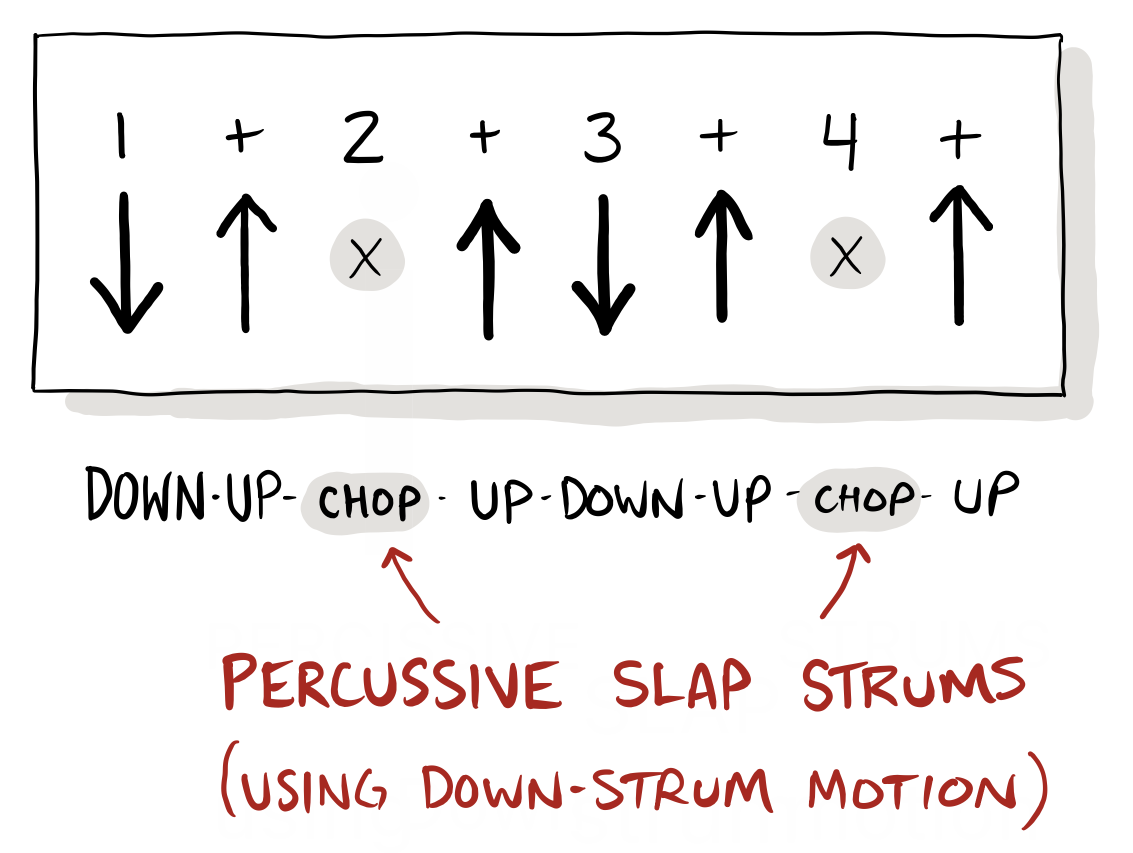
It is indeed possible to write strumming patterns directly beneath guitar tabs. This tells us which direction we should move our pick while moving through the tabbed arrangement. In this example, the descending bass notes are highlighted simply to draw your eye… notice how they align with bass-note strums:
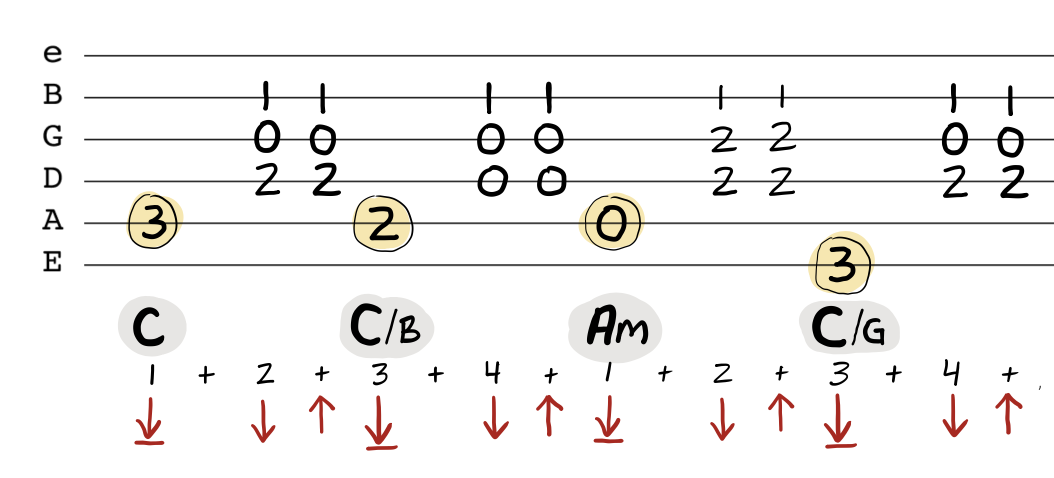
Be sure not to confuse your strumming direction when reading tabs! A down-strum always goes from thickest string to thinnest — which would be an upward direction if written directly within tabs. That’s why they’re generally written in their own separate rows.
Next Lesson: How to Read Fretboard Diagrams →